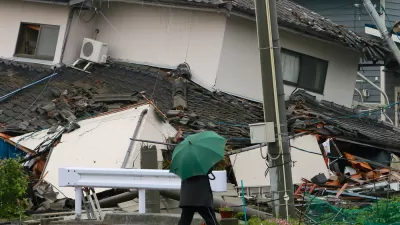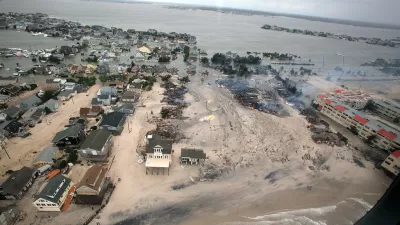Ed Blakely indicts the planning profession for failing to protect our communities from the threat of a changing climate. How can we plan places that serve as bulwarks from the worst physical traumas, while providing economic and social resiliency?
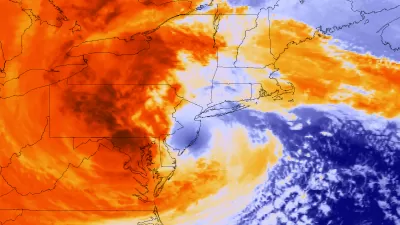
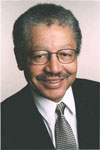 Only a week ago, scientists and professionals all over the world were appalled by the conviction and sentencing of Italian Seismologists for failure to predict an earthquake in L'Aquilla, Italy. This seems absurd. Earthquakes are not really predictable. But, the potential damages of Sandy were well known long before the storm struck the East Coast of the United States on October 29, 2012. Planners and city officials approved developments on the New York, New Jersey and Carolina coast in areas of known high risk. Why shouldn't they go to jail?
Only a week ago, scientists and professionals all over the world were appalled by the conviction and sentencing of Italian Seismologists for failure to predict an earthquake in L'Aquilla, Italy. This seems absurd. Earthquakes are not really predictable. But, the potential damages of Sandy were well known long before the storm struck the East Coast of the United States on October 29, 2012. Planners and city officials approved developments on the New York, New Jersey and Carolina coast in areas of known high risk. Why shouldn't they go to jail?
I advance this argument to get the attention of our planning profession, which has been complacent and diffident when we know better. We blame our political masters. But an engineer who knowingly gives bad advice losses his/her license. We have to wake up. Sandy should be our line in the sand. We cannot say we are agnostic about climate change and the forces of nature. We know all about these issues and we have a duty to communicate this information clearly and forcefully to our communities. Climate change may be unsettled in degree and direction or even cause. But the information on increasingly severe weather is settled science. Even skeptics agree on this. So, why should planners endorse developments in dangerous areas? Even a 1 in 100 (year-actually possibility) is too great a risk, particularly when a structure will not survive even a modest flooding or increase in real temperatures.
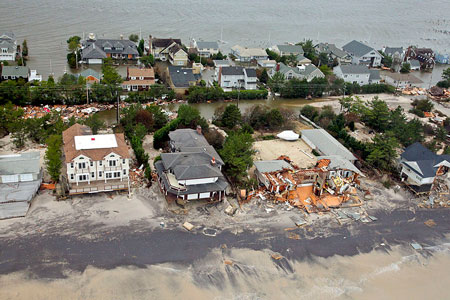
So, why should planners allow and even promote such outrageous activity? Surely this form of building and land use violates the planning codes of ethics. Of course, we all know the reason. Planning lacks professional standing like engineering, law or medicine. Maybe Sandy will give planners the backbone to say "enough is enough" and prompt the planning profession to actually look and act like a profession. As professionals we have a duty to take positive actions in our communities and plan for the known hazards each of them will face. We should plan our neighborhoods not merely as bulwarks against the worst physical traumas, but as better places to live and work for all people of all races, in order to generate more economically and socially viable communities.
Where to Begin
Planners throughout the profession need to take a direct role in re-imagining and re-crafting communities for a severe weather era. This means every community in the nation will have to be re-imagined for a new era of resilience and adaptation. The current land use regimes may have to be re-thought, and in some cases totally abandoned. Communities fear loss of property values if their area is considered at risk. But the market has already, or will soon, reach that determination through insurance spikes and price declines. Better plan to improve a community to make it more resilient rather than wait for it to decline and die. Second ring suburbs are declining across the nation, illustrating this phenomenon already. Those places near water with no sea walls or appropriate mitigations will be among the first to be abandoned. Unfortunately, many seniors have elected these as their retirement homes.
Second, planners need to lead community weather and habitat risk analysis for every city. In many places, waterside, hillside and even low lying developments on wetlands or unstable ground could give way in severe rains, crack in prolonged droughts, or succumb to potential water or land movements unimagined at the time of construction. Too many suburban developments are already untenable for a severe weather future. In addition, climate change is altering wildlife and insect habitats leading to the spread of disease and other dangers to communities.
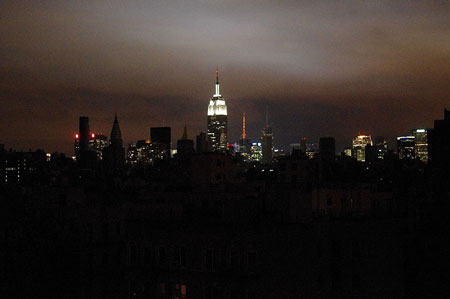
Third, auto dependency is a new hazard. Sandy reflects the dangers of communities so totally dependent on the automobile, that in an emergency, residents have no capacity to obtain routine living items like food without a car. Any form of urban community that cannot be reached by some form of mass transit or provisioned with food and water will be too risky to live in within the decade. This situation is exacerbated by the fact that gas stations are closing all over the nation because they are environmentally hard to permit and are no longer profitable.
Finally, every community must be re-planned for energy, water and food self-sufficiency in time of crisis, like Japan. There is no reason that schools, fire stations and other buildings in every community cannot be re-designed so that they capture and store, as well as recycle, bio mass, sun and even wind energy. These systems should feed to the grid in good times and give back to the community in disasters. Similarly, we should, like Japan, build sports fields, median strips, and other areas with fresh clean water cisterns under them. Within every 400 to 600, or 800 by 800, square meter block there should be locally grown foods combined with food shelters for storage of canned and other long lasting goods for emergencies. Food should be grown in parkways and other areas, along with tree planting for berries and fruits as part of community development and environmental protection.
The Future
Our future necessitates increased community reliance. By building communities that are heterogeneous in age, lifestyle, and race to fit the realities of the present, we can cultivate the tolerance and cohesion necessary to confront our looming challenges. Maybe a little bad weather will do what good intentions and politics have not been able to achieve; give all Americans a sense that "we are all created equal and must work together to pursue happiness". This would be a well-planned future for America and one built on hope, not fear.
Edward J Blakely is honorary professor of urban policy at the University of Sydney. He was Executive Director of Recovery in New Orleans (2007-2009). His book My Storm: Managing Recovery in New Orleans in the Wake of Katrina, (Univ of Pennsylvania Press, 2011) recounts his experiences in New Orleans and other disaster recoveries.

Planetizen Federal Action Tracker
A weekly monitor of how Trump’s orders and actions are impacting planners and planning in America.

Congressman Proposes Bill to Rename DC Metro “Trump Train”
The Make Autorail Great Again Act would withhold federal funding to the system until the Washington Metropolitan Area Transit Authority (WMATA), rebrands as the Washington Metropolitan Authority for Greater Access (WMAGA).

The Simple Legislative Tool Transforming Vacant Downtowns
In California, Michigan and Georgia, an easy win is bringing dollars — and delight — back to city centers.

Albuquerque’s Microtransit: A Planner’s Answer to Food Access Gaps
New microtransit vans in Albuquerque aim to close food access gaps by linking low-income areas to grocery stores, cutting travel times by 30 percent and offering planners a scalable model for equity-focused transit.

This City Will Pay You to Meet Your Neighbors
A North Kansas City grant program offers up to $400 for residents to throw neighborhood block parties.

Commentary: Our Silence Will Not Protect Us
Keeping our heads down and our language inoffensive is not the right response to the times we’re in. Solidarity and courage is.
Urban Design for Planners 1: Software Tools
This six-course series explores essential urban design concepts using open source software and equips planners with the tools they need to participate fully in the urban design process.
Planning for Universal Design
Learn the tools for implementing Universal Design in planning regulations.
Smith Gee Studio
City of Charlotte
City of Camden Redevelopment Agency
City of Astoria
Transportation Research & Education Center (TREC) at Portland State University
US High Speed Rail Association
City of Camden Redevelopment Agency
Municipality of Princeton (NJ)


























